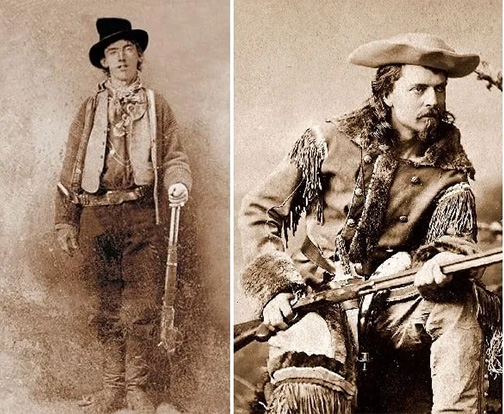You’ve probably heard of Old Judge, Gypsy Queen, Allen & Ginter, and Goodwin.
But have you heard of Yum Yum Tobacco?
If you are not a 19th century baseball card aficionado, the odds are you haven’t. They are among the rarest of the rare, and perhaps possess one of the greatest names for a baseball card ever. Yum Yum Tobacco? C’mon! Did the likes of these Wild West types go into a saloon and ask for some “Yum Yum”? I get a kick out of thinking that it may have actually happened. “Git me sum Yum Yum & make it snappy. I got a train heist to git to!”

Of the 66 cards on the 1888 Yum Yum Tobacco checklist that are known to exist, just over 100 total have been graded between PSA and SGC. Compare that to over 258,000 T206 cards that have been graded – by PSA alone! On average, not even two of each Yum Yum have been graded. Roughly half of the cards depict drawings of players, whereas the other half are actual photographed portraits from as far as I can tell.
When I was shown a (re-backed) Billy Sunday, I was excited! As you can see below, I outfitted it in a newer Topps Gypsy Queen frame – I took out the GQ mini and placed the Yum Yum in there. I think it works very well for a holder! This is an extremely scarce card – you would be hard up to even find a photo of this card online….until now.

If you know me, you know I’m a big fan of Billy Sunday – there have been books written about his life. He quit baseball to become one of Americas most influential Evangelists – eventually packing out crowds larger than entire baseball games. Definitely check out the books written about him if you get a chance – it is a fascinating story!
Not all is as it seems with this Billy Sunday card, though. The Yum Yum Tobacco baseball card set is rife with errors by way of misspellings and mistaken identities – this Billy Sunday is no exception.
You see, what you are looking at is not an Evangelist. Pictured is a flame-throwing Pirate.
Like many other cards in the Yum Yum Tobacco set, the portrait does not match with the name. We’ve seen this with infamous cards in the past – 1987 Donruss Opening Day Barry Bonds / Johnny Ray comes to mind. A few years back, I did a trivia asking people what was real and what wasn’t. The first pic below shows my version of the mistaken identity card, the middle is the real error, and the third is the corrected card.

So, just who is this Billy Sunday imposter, anyway? It is none other than Mark Baldwin – a man who was called “the fastest pitcher I ever caught” by Jack O’Conner, a player who caught Cy Young!
SABR (https://sabr.org/bioproj/person/mark-baldwin/) has some wonderful quotes which I’ll share here:
“He could send them down the line like a rifle shot. When I joined the Cleveland club [in 1892] they tried to scare me with terrible tales of what ‘Cy’ Young would do to my hands. I was told that the big Ohio boy was the fastest twirler of them all, but he has never bothered me as much as Baldwin.” – Jack O’Conner, 1897
This was echoed by others as well:
“Mark Baldwin is conceded to be the swiftest pitcher in the league.” -The Milwaukee Daily Journal
“No speedier man lives than Baldwin, and his terrific speed has made him a terror to opposing batsmen.” – The Galveston Daily News
The Daily Northwestern commented, “Mark Baldwin, of the Chicago club, goes through six different motions before he delivers the ball. He first passes his hand across his breast, then sizes up the ball, puts his right hand on the back of his head, looks at the ball again, closes his left eye and finally shoots the ball over the plate like lightning.”
Even more frightening for batters is the fact that this former 30 game winner walked nearly as many as he struck out. Think: Randy Johnson vs. John Kruk in the 1993 All Star Game.

According to various reports online, Baldwin is practically the reason the baseball team from Pittsburgh is named the Pirates. He was chased around a ship by a monkey and got bit on the leg during Spalding’s World Tour. It doesn’t get more piratey than that, does it? But that isn’t the reason why. Read on … (Pssst – read more about this tour – it is fascinating!) King Kelly was listed as a main attraction of this tour, but did not go, due to “business interests in New York”. He owned a tavern there with umpire Honest John Kelly – the tavern was named “The Two Kels”.
Check out this cool photo – I wish I could tell which one is Baldwin!

According to Chicagology.com –
“Spalding and the players climbed onto the Sphinx for photographs, much “to the horror of the native worshippers of Cheops and the dead Pharoahs.” No less disconcerting must have been unsuccessful efforts of several ballplayers to throw baseballs over the sacred Egyptian tombs. Observers reported that they amused themselves by throwing baseball’s at the Sphinx’s right eye, and that Fogarty, the Philadelphia outfielder, actually hit it.”
The story of Mark Baldwin is an interesting one, and worthy of research. While Billy Sunday was an Evangelist who likely had a big hand in the 18th amendment (the prohibition of the manufacture, sale, or transportation of intoxicating liquours), Baldwin was a big time drinker (remember the monkey on the ship thing I mentioned?) It is possible that Sunday and Baldwin could not have been more different from each other, making the Yum Yum mistaken identity mishap even more interesting.
Another interesting note on Baldwin according to sabr.org:
“Baldwin joined Chicago in the spring of 1887. He nearly died in spring training; on March 17 at the club’s Hot Springs, Arkansas, hotel an employee walking outside Baldwin’s room smelled gas. He broke down the door and found Baldwin and his roommate, Tom Daly, unconscious. He couldn’t rouse them and immediately called for a doctor. Eventually, the two players were revived. One of them had accidentally blown out the flame in the gaslight. Refreshed, Baldwin later in spring training smashed what was said be the longest ball ever hit on a Hot Springs ballfield, a shot that knocked in two runs.”
Baldwin is likely largely responsible for Pittsburgh becoming known as the Pirates for his “piratical behavior” in poaching players. According to SABR:
“Two days later, he went to St. Louis on a recruiting mission and tried to land pitcher Silver King, who was the property of the Browns, and his old batterymate, Jack O’Connor of Columbus. He was successful in signing King for Pittsburgh. (The team had been known as the Alleghenys since its debut in 1882, but for stealing King, the club became known as the Pirates.)”
Because of this, Baldwin locked horns with Chris von der Ahe, another interesting character of 19th century baseball that is worth researching. The legal entanglement that lasted for several years between the two involved false imprisonment, kidnapping, setups, investigators, grandstanding arrests, and more.
I’ve said it before, and I’m sure I’ll say it again – 19th century baseball is filled with interesting storylines that would almost be criminal not to share. There are lots of exciting stories for us to uncover. The stories that have been so wonderfully documented over the years give additional depth to the baseball cards of that time period – whether the player depicted was an Evangelist or the reason Pittsburgh came to be known as the Pirates.




Leave A Comment
You must be logged in to post a comment.